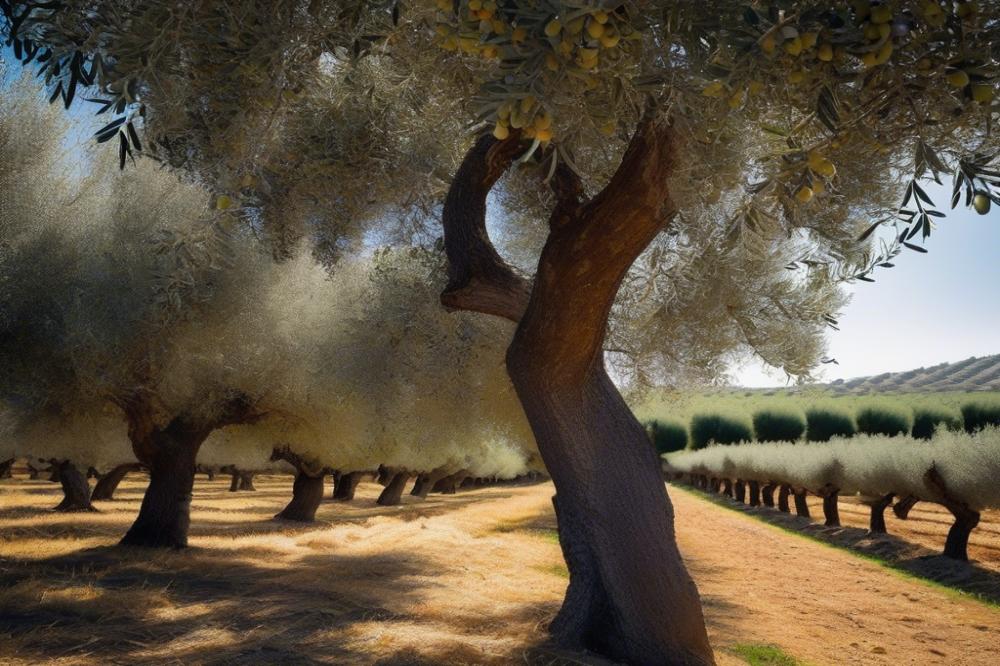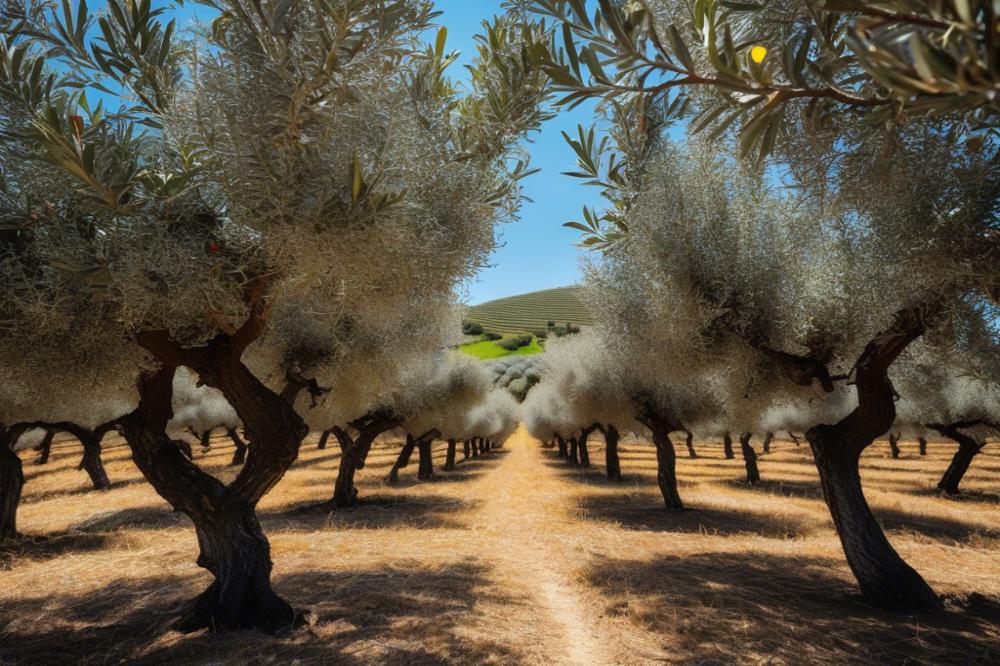Introduction
Zinzala Olives play an essential role in the world of agriculture. These olives are not just a unique crop but also offer various products, including that beloved staple, olive oil. Farmers dedicate their efforts to growing these fruits despite facing numerous challenges along the way.
In olive cultivation, the significance of soil quality cannot be overstated. Healthy soil supports strong growth, while poor conditions can hamper yield. Farming practices like pruning and irrigation are crucial. They foster better production and improve the health of the olives being harvested. Pest control methods also come into play, ensuring that the trees develop without devastating infestations.
The rewards of cultivating Zinzala Olives can be substantial. Farmers enjoy not only the financial benefits that come from selling the olives, but they also contribute to sustainable farming. Many consumers now prefer locally grown, high-quality products. This growing demand can lead to increased prices and better incomes for growers.
Harvesting olives is an intricate process. Proper techniques can greatly influence the quality of the oil derived from the fruits. Each step, from planting to market, carries its own set of considerations and potential obstacles. By understanding these challenges and rewards, farmers can make informed decisions that will enhance their olive-growing ventures.
Zinzala Olives: Challenges of Cultivation

Soil quality considerations
Good soil quality is vital for olive tree growth. Zinzala olives require well-draining soils rich in nutrients. Therefore, farmers must often test their soil before planting. Soil pH can greatly affect the trees’ health as well. The right balance allows the trees to absorb essential nutrients. Poor soil can lead to stunted growth and lower yields. Regular amendments and organic matter can help improve soil quality. Farmers may also consider crop rotation to maintain soil health.
Climate requirements
The climate plays a crucial role in olive cultivation. These trees thrive in warm, Mediterranean-like climates. They need plenty of sunshine and moderate rainfall. Unexpected frost can damage blossoms or reduce crop yield drastically. Understanding local weather patterns is important for growers. Temperatures too low can halt growth or kill young plants. Adapting to climate requires careful planning and local knowledge. All these factors affect the potential for olive oil production.
Pest control challenges
Managing pests is a constant challenge in olive farming. Insects such as the olive fruit fly can devastate crops. Regular monitoring is essential to catch infestations early. Eco-friendly pest control methods are preferable to harmful chemicals. Integrated Pest Management (IPM) strategies can minimize damage. This includes using traps, natural predators, and careful observation. Pest control should focus on sustainability, balancing productivity with environmental health.
Irrigation needs and techniques
Irrigation is essential in many growing regions. While olives are drought-tolerant, they require support during dry spells. Drip irrigation systems are popular for their efficiency. Proper techniques can maximize water use while minimizing waste. Effective irrigation can prevent trees from stress during critical growth periods. Farmers must learn when to water and how much to apply. Timing irrigation before flowering or fruit set is particularly important. Careful management ensures abundant harvesting when the time comes.
Zinzala Olives: Rewards of Cultivation

Market Demand for Zinzala Olives
Many consumers show a growing interest in premium olive varieties. Zinzala olives are known for their rich flavor and vibrant taste. This popularity boosts their marketability. Retailers often seek out unique products to satisfy customer preferences. As people become more health-conscious, olive products are in high demand. This trend can lead to better prices and more sales for farmers.
Economic Benefits of Cultivation
Cultivating Zinzala olives offers noteworthy economic advantages. Initially, starting an olive grove can require significant investment. However, the long-term payoff is substantial. Harvesting these olives can lead to profits that support local economies. Investments in agricultural technology can enhance yields. Increased productivity results from effective practices like pruning and irrigation.
Olive Oil Production Potential
High-quality olives translate into exceptional olive oil production. Farmers can expect to produce oil that garners attention in specialty markets. Quality matters greatly in olive oil, and Zinzala olives can meet those standards. A small batch can provide a unique flavor that appeals to gourmet chefs and home cooks alike. Success in this area can elevate a farm’s reputation.
Contribution to Sustainable Farming Practices
Growing olives can fit well into sustainable farming practices. These trees require less water compared to other crops. Efficient irrigation systems can conserve resources while still yielding a good harvest. Moreover, olives are often resistant to pests. This quality reduces the need for chemical fertilizers and pesticides. Embracing organic practices can lead to healthier soil quality and a better ecosystem balance. Eco-friendly farming can attract a broader range of consumers who value sustainability. Thus, Zinzala olives contribute not only to personal profits but to the environment as well.
Cultivation Techniques for Zinzala Olives

Pruning Methods for Optimal Growth
Pruning plays a crucial role in the growth of olive trees. During the winter months, selective cuts can improve air circulation and sunlight exposure. This process helps in developing a strong structure for the tree. By removing dead or crossing branches, farmers can promote healthier fruit development. Regular maintenance is essential. It can also make pest control easier and more effective. Ultimately, well-pruned trees lead to better olive oil production.
Irrigation Strategies for Healthy Trees
Watering practices must be carefully planned. Olive trees require consistent moisture but can suffer from overwatering. Drip irrigation systems are often recommended. They deliver water directly to the root zone, conserving resources and enhancing soil quality. Schedule irrigation during dry periods to sustain tree health. Monitoring soil moisture levels can guide decisions. Finding the right balance is a significant challenge for many farmers.
Harvesting Practices for Maximum Yield
Timing is everything when it comes to harvesting. Olives should be picked when they are ripe but before overripening occurs. This requires careful observation of the fruit’s color and firmness. Hand harvesting is gentle and helps in retaining fruit quality. However, mechanical methods can be useful for larger orchards. The goal is to minimize damage during this critical phase. Successfully harvesting can lead to increased yields and better quality oil.
Soil Management Techniques
Maintaining healthy soil is important for successful cultivation. Regular soil testing can inform farmers about nutrient needs. Adding organic matter improves soil structure and fertility. Crop rotation can also be beneficial. This method reduces pest buildup and promotes a sustainable farming system. Cover crops can protect and nourish the soil during the off-season. Paying attention to soil health is a key step in overcoming cultivation challenges.
Olive Oil Production from Zinzala Olives
Processing and Extraction Methods
Harvesting olives is an essential step in producing high-quality olive oil. After picking, the fruit must be processed quickly to maintain freshness. Common methods for extracting oil include cold pressing and mechanical extraction. Cold pressing, in particular, is known for preserving flavors and nutrients. It involves crushing the olives and separating the oil from the pulp and water. Specialized machinery is often used to ensure efficiency. This process can be challenging, as timing and temperature are crucial for quality. When the olives are not processed swiftly, oxidation can occur, degrading the oil’s taste.
Quality of Oil Produced
The quality of oil from Zinzala olives is highly regarded among connoisseurs. Factors such as soil quality and climate influence the flavor profile significantly. Each harvest can yield oils with varying richness and aromas. The oil tends to have a robust flavor, often described as fruity and slightly peppery. However, achieving consistent quality requires attention to detail. Careful pruning of the trees aids in maintaining good air circulation and sunlight exposure. Employing sustainable farming practices helps to promote healthy trees, ultimately leading to better oil.
Market Opportunities for Zinzala Olive Oil
Consumers are increasingly seeking high-quality, artisanal products. This trend creates exciting market opportunities for olive oil produced from this variety. Packaging and branding play vital roles in attracting buyers. Many people value sustainable methods and organic certification. Gaining recognition at local farmers’ markets can also boost sales potential. There is potential for expanding into gourmet food shops and online platforms. Educating consumers about the benefits of the oil can foster loyalty. Additionally, entering competitive markets may present difficulties but can be rewarding with the right strategy. Pest control practices and irrigation must be effectively managed to maintain quality and yield.
Case Studies and Expert Insights
Successful Growers of Zinzala Olives
Farmers across various regions have embraced Zinzala olive cultivation. One notable success comes from a family-run estate in Tuscany. They began with four acres, focusing on high-quality products. Understanding how to adapt to the local climate proved essential for them. Over the years, they made significant strides in olive oil production. Yielding top-tier oil required patience and a strong commitment to sustainable farming practices.
In California, another ambitious grower took a different approach. They integrated modern technology with traditional methods. Using precision irrigation systems helped maximize water efficiency. Such practices not only boosted growth but also increased soil quality. Notable successes from both farms highlight the agricultural potential of Zinzala olives.
Innovative Farming Practices
In the realm of olive farming, innovation is key. Multiple growers share strategies that have led to fruitful outcomes. Pruning techniques vary depending on desired fruit quality, and experts recommend routine maintenance. Proper pruning allows for better air circulation and sunlight exposure, vital for healthy trees. A group of growers experimented with intercropping to enhance biodiversity. This method provided additional income while promoting a healthy ecosystem.
Pest control often challenges Zinzala olive growers. Many turned to organic solutions, which alleviate the impact on the environment. Natural predators have shown great effectiveness in managing pests. Some farmers even engaged in community education, sharing knowledge on sustainable approaches. This collaboration within the agriculture community fosters resilience and learning.
Lessons Learned from Cultivation Experiences
Growers frequently share insights from their journeys. A common lesson is the need for adaptability. Weather patterns can drastically influence harvests. Understanding climate changes helps with timely decisions on planting and irrigation. Soil quality remains a fundamental factor in olive cultivation. Testing and amending soil has helped many farmers enhance their yields.
Harvesting practices also evolved over time. Hand-picking became unpopular due to labor shortages, leading some to use machines. However, some growers still prefer hands-on methods for quality assurance. They argue that manual harvesting maintains the integrity of the fruit. Overall, every experience contributes to a deeper understanding of Zinzala olive farming. As challenges arise, it is the rewards that motivate these dedicated individuals.
Final Thoughts
Summary of Challenges and Rewards
Growing the Zinzala variety introduces both challenges and rewards. Cultivators might encounter difficulties like pest management, water requirements, and fluctuating market prices. Each of these aspects can test the patience and skills of farmers. However, successful cultivation results in not just a plentiful harvest but also premium-quality olives. The satisfaction derived from nurturing a crop while overcoming obstacles is truly rewarding.
Encouragement for Prospective Growers
Anyone considering this unique endeavor should approach it with both excitement and caution. Start with research, gather knowledge, and connect with experienced growers. A supportive community exists for those new to olive farming. Seek mentorship and share experiences. With determination and perseverance, the path may become clearer.
Future of Olive Cultivation in Agriculture
Looking ahead, the future of this variety seems promising. As interest in sustainable agriculture grows, more people value locally sourced produce. This trend could increase market demand for Zinzala olives. Farmers who adapt to changing climates will likely find success. Innovative techniques and careful planning can help cultivate this exceptional crop. Investing time and resources today may result in a bountiful tomorrow.



